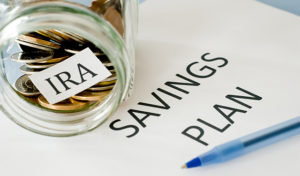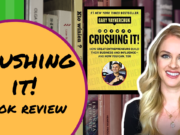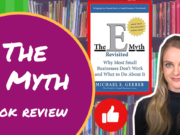If you’re not sure how it happened, but suddenly you are in your 30’s with a spouse, kids and tons of responsibilities, this is the time to sit down and re-evaluate your priorities. One of the most important things to plan for at this point in life is your retirement. With the cost of living expenses soaring, the best time to start retirement planning is in your 30s. Setting up a plan and starting early will set you up for a promising financial future in your golden years.
Your 20s were about figuring out what you want to do, your 30s are all about figuring out what you need to do. Waiting too long to start thinking about saving money can affect how you will live after retirement.
Most financial advisors agree that in your 30s you should be saving about 15% of your monthly income in order to be secure in your retirement. Luckily, there are many ways to save—401K, Roth IRA, investments and savings accounts all count toward your 15% goal.
Watch the video here:
Read on to find out ways to secure your future and the best ways to save for retirement in your 30s.
6 Ways to Save for Retirement in Your 30s
Start an Emergency Fund
 While many people have a little money set aside for a rainy day, your 30s is the time to bulk up your emergency fund savings. Financial planning experts recommend stashing away 6 months worth of expenses in a savings account. Due to growing expense and responsibilities your savings account has to grow as well.
While many people have a little money set aside for a rainy day, your 30s is the time to bulk up your emergency fund savings. Financial planning experts recommend stashing away 6 months worth of expenses in a savings account. Due to growing expense and responsibilities your savings account has to grow as well.
Even savings accounts can make you a little money through interest payments. Find an account that makes your money work for you. This is the time to evaluate your expenses and make a commitment to save every month.
401(k) Contribution
If your job offers a 401(k) plan, this is a great way to start your retirement planning. Money is taken out of your paycheck before taxes and invested into one or more funds available within your plan. You not only determine what percentage to contribute, but also which funds to invest in. Many companies also offer 401(k) matching programs.
If you already have a 401(k) account but are investing the bare minimum needed for the match, oftentimes around 3%, now is the time to up your contribution. Since this account builds over time, even a 1% increase can result in thousands of dollars by retirement age.
Cashing out your 401(k) results in penalties and high taxes if done before you are officially retired. If you move jobs, convert your 401(k) into an IRA account or roll it over to your new company. It’s best not to think about this money until it’s time.
Open IRA Accounts
 An IRA account is a personal retirement savings account. You contribute money after taxes have been taken out, which means you’ll be able to access the money absolutely tax free when needed, after 59 1/2. There are limits on yearly contributions, as well as some qualifying requirements. Check to see which IRA would work best for you depending on your income.
An IRA account is a personal retirement savings account. You contribute money after taxes have been taken out, which means you’ll be able to access the money absolutely tax free when needed, after 59 1/2. There are limits on yearly contributions, as well as some qualifying requirements. Check to see which IRA would work best for you depending on your income.
Invest, Invest, Invest
This is the time of life when you can be a little more aggressive with your investments. You can diversify your stocks and options and take some risk. As you get closer to retirement age, you need to be a little more conservative, but in your 30s you should aim to buy more stocks and take advantage of long term gains.
If you have a financial advisor, talk to them about your investments. Lots of online services are available as well. Check out Charles Schwab to get started.
Company stock can also be a great asset—often company stock is sold at a discount to the employees. Although you should take advantage, it is important to not put all your eggs into the company stock basket. Experts advise not to have more than 10% of your total investment tied up in company stock. If something were to happen to your company, you many not only lose your job but your investments as well.
Pay off Debt
Your mortgage doesn’t count, but your school loans and credit card debts do. The focus of your 30s is to come up with a strategy to become mostly debt free.
 Consider consolidating your school loans, if you have more than one. Also, some institutions will offer a lower rate if you sign up for automated monthly payments. You can check your options at Credible to see if you are eligible for consolidation or a lower rate on school loans.
Consider consolidating your school loans, if you have more than one. Also, some institutions will offer a lower rate if you sign up for automated monthly payments. You can check your options at Credible to see if you are eligible for consolidation or a lower rate on school loans.
If you are paying interest on credit cards, it may be time to investigate a lower interest credit or one that offers 0% interest rate incentives. The Citi Simplicity card currently offers 18 months of 0% interest on balance transfers. Transferring your balance to a 0% card can give you the time you need to pay off your debt. It’s important to get these small debts paid off before retirement hits and you find yourself on a fixed income.
Start Saving Now
If you start your retirement planning while you are young, even if you’re not making a huge income, you will be set when the time to stop working comes. It’s hard to predict how much to save for retirement, but there are lots of online tools to give you a better idea. Try using an online retirement calculator to show you what you will need. Bankrate offers a customizable save for retirement calculator that produces a report of what you should be doing starting today.
While there are lots of expenses to think about in your 30s, the earlier you make a commitment to save, the better off you will be. Even if you are not at the career of your dreams or making that six figure salary you hoped for, saving for your future has to start now.
For more tips on retirement planning, visit savemoneytricks.com.

























